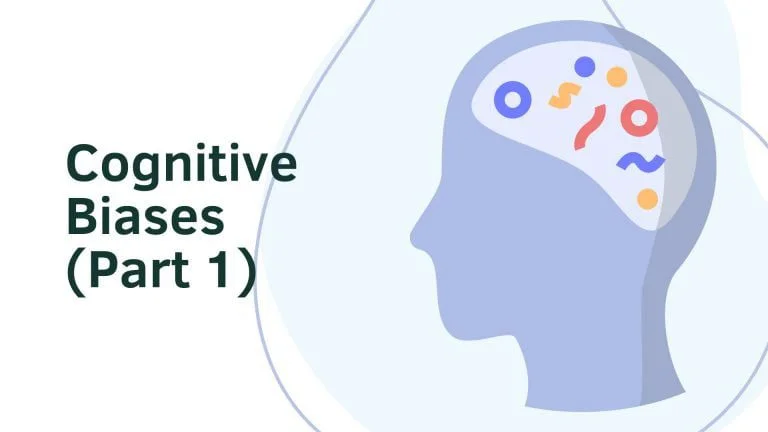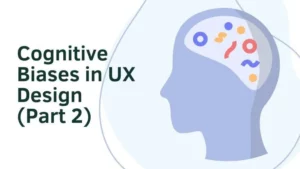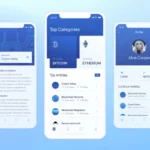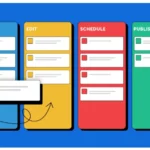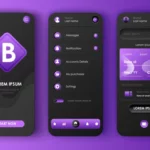Amazing UX demands that designers and writers keep many things in mind. However, there is a powerful element that professionals may be leaving out of the equation. Ignoring it can lead to devastating consequences but entertaining it can open up a world of possibilities. It all comes down to cognitive bias, or how the average user will process and simplify information according to their personal experience, perspectives, and preferences.
If UX designers and writers are aware of cognitive biases, they can make a digital product that is more appealing and valuable. Follow along to find out why this can be so important and check out Part 2 to learn about common cognitive biases.
Table of Contents
What Is A Cognitive Bias?
The brain can understand new information very quickly. It utilizes its knowledge of experiences, opinions, perspectives, preferences, and emotions to process large amounts of data and come to a conclusion about it. Since the individual is looking at everything through this lens, their conclusions can be skewed and error-prone. In other words, they can have a cognitive bias.
Most people have cognitive biases and judge things or situations rapidly. There are many different types of cognitive biases, differentiated according to how they occur and what information is used to formulate their ideas.
For the most part, people are unaware of their own errors in thinking or judgment. However, if they study the types of cognitive biases, they can become more aware of how it affects the way they perceive things. It can also be helpful for others to understand how others may formulate opinions. It is especially important for UX designers and writers to consider, as consumers typically make snap judgments about digital products. If they do not enjoy their experience, they will discontinue use and turn to a competitor.
How Can Cognitive Biases Affect UX?
Cognitive biases can affect multiple aspects of an individual’s perception. Namely, memory, behavior, judgment, and decision-making. All of these processes are engaged when a user encounters a new digital product, making it equally subject to cognitive bias.
There are numerous cognitive biases that can come into play when a user encounters a digital product for the first time. They help the user:
- Quickly react
- Process large amounts of text, images, and videos
- Navigate a complex interface
- Scan content and understand the purpose or underlying message
- Determine if a brand or community supports their values or goals
- Understand if a website or app is popular
Just from this short list, it is easy to see how cognitive biases could either positively or negatively affect the user experience. If UX designers and writers know how cognitive bias works, especially amongst their target audience, they can make it easier for them to formulate better judgments. They can also cut down on the negative perceptions that may arise from digital elements and written content.
Can Cognitive Biases Affect UX Designers?
While users may be the main focus, it’s crucial to also consider that every UX researcher, designer, and writer is also human. They, too, are subject to cognitive biases. As such, their perceptions and thinking processes can cloud their judgments. It can lead to making poor decisions and refusing to consider alternate options or others’ disagreements.
Biased thinking and decision-making can lead to problems in every step of the UX process. Researchers may create leading questions for user surveys, use select data to confirm their beliefs, neglect to consider opposing data or interpret fairly equal results or even ambiguous data to support their assumption. Unfortunately, testers or data analyzers can also fall prey to these errors. As designers and writers will base their designs on the collected information, it is dangerous to have biased research results.
Apart from original research errors, cognitive bias can occur down the pipeline in design and writing. Professionals may use research data to support their own ideas, misunderstand their target audience, ignore teammate’s suggestions, or misinterpret feedback. Consequently, when the digital product enters user testing or goes live, it performs poorly amongst the target groups. The team may need to head back to the drawing board and start completely from scratch.
How Do You Overcome Cognitive Biases?
Cognitive biases can be challenging, especially when teams must contend with their own cognitive biases on top of their users’ potential cognitive biases. However, it is not impossible to overcome these issues. Use these helpful tips to stay one step ahead:
- Do Research Early in Development: If the team already spent time and energy on a specific project design, they are more likely to have their heart set on it. It sets up a perfect stage for confirmation biases in research and interpretation. Alternatively, do research early once you have a target audience in mind. Use that research to propel ideas about design and content.
- Target Your Users: Research should not direct itself toward a general audience. There is a specific group or groups of people that will use your product. If you target them, you will not only gather more useful information, but you will be able to draw conclusions about their biases more easily.
- Ask Open-Ended Questions: Any research questions should leave the door open for several or multiple answers, rather than lead towards a specific result. For instance, there is a difference between asking users if they like the placement of a button and asking where they would prefer the button to be placed.
- Use Multiple Research Sources: Relying on one type of research method is a dangerous game. Try using multiple avenues to collect data, such as surveys, interviews, beta testing, peer reviews, analytics, and customer service statistics
- Always Test: Using preliminary data is important, yet user testing designs and writing is also critical. It provides useful feedback that should be evaluated and used by a whole team. User testing can also be helpful for understanding target consumers’ cognitive biases.
- Create a Team: In some cases, UX professionals need to work alone. However, teams or peer reviews can be helpful in avoiding certain confirmation biases. It helps UX designers and writers become aware of their own errors in judgment.
- Study Biases: Simply becoming aware of the common cognitive biases involved in UX can be monumental. When professionals can recognize biased thinking, they are more likely to find it in their own and others’ processing.

